 |
||
| home | features | exhibitions | interviews | profiles | webprojects | gazetteer | links | archive | forum | ||
|
|
||
Brian Sewell at the Acorn: a personal viewGeorge Care
Brian Sewell's talk at the Acorn Theatre, Penzance took place only a week ago (23rd February, 2007) but already seems to have acquired a mythic quality - having even reached the national newspapers http://news.independent.co.uk/uk/this_britain/article2311313.ece. The
event itself was very well attended - indeed the Acorn was totally packed
with the contemporary gentry of Penwith and beyond. Sewell mounted the
platform gingerly and sat sockless between what looked like imitation
Picassos with red and yellow diamond Matisse-like borders. In fact these
were banners in homage to Alfred Wallis. He looked rather frailer
The pace of delivery and the changes of mood were well suited to engage the audience although a few left within the first 15 minutes following some moderately dismissive comments on the later work of David Hockney!! Equally disenchanting, Sewell found, was breakfasting with Francis Bacon in the posh restaurants of Kensington that became a scatological affair –the deliberate consumption of beans by Bacon resulting in a devastating flatulence visited upon all and sundry. The
atmosphere changed once again as Sewell talked of his experiences in
Eastern Turkey looking at Christian Churches near the tense border close
to the Kurds. Whilst he was talking about the beauty of these places it
became clear that the art which Brian Sewell really values has this aspect
of veneration, certainly reverence and on the whole is likely to be from
the distant past. Indeed he was at pains to point out the tremendous line
which is drawn between fine art and anything which might actually be used,
like a pot which is a useful artefact and thus in a completely different
category or domain. It was not part of his function as an art critic to
comment on anything which might possibly be useful! Art is sui generis and
its sacred purpose derives from itself alone. Nevertheless, he does talk a
lot about architecture, particularly religious architecture and also his
enthusiasm for the design of fast cars. Perish the thought, clearly behind
Brian Sewell, there lurks a Jeremy Clarkson!
He told an intriguing story about his arrest by border guards whilst carrying detailed large scale maps of the local countryside and his subsequent escape with the assistance of the Kurds testified to both his intense enthusiasm and a foolhardy lack of concern for his own personal safety. This was touching, as was his stories about the rescue and care for a lost dog. His warmth emerges when he talks about small animals and his oral delivery shows a writer’s command of narrative pace. So for Sewell the apex of interest appears to revolve around the great figures of classical History of Art, particularly the High Renaissance, Leonardo and Raphael. These wonders from the past are contrasted with today, which is presented as dominated by the sordid politics of preferment and patronage, particularly in the London village. His battles with the Tate Gallery under Nicholas Serota have become renowned. Sewell's acerbic wit is directed at the machinations of the Arts Council and the abuse of appointed influence, and when this means that artistic talent is not just not encouraged, but truly stifled - he is justly vexed. In this context it was particularly interesting to consider his remarks on the state of education. He posed the question of the difficulty that undergraduates experience today in appreciating something like the Michelangelo ceiling of the Capella Sistina. “How can they possibly appreciate the mind set of the artist, his intimations of Glory if they are almost totally unfamiliar with the Christian background?” His students arrive with so little general knowledge about the Old and New Dispensations, that is to say the difference between the Old and New testaments. This point about the jejune banality of modern education, particularly Secondary Education is well made. A serious point, which one hopes is not overlooked in the general furore that surrounds this controversial critic.
In the
second part of the evening Brian Sewell revealed that he enjoyed painting
and sketching ,and despite his generally dismissive attitude towards many
works and paintings, he himself had been reduced to many tears by a piece
of work by Poussin which he considered had been painted just before the
painter’s decline. The tears occurred in an art gallery in Dresden and
merited the disapprobation of the East German curator on duty. There is
little doubt that Brian Sewell can, in fact, be a sensitive soul. It is
just that today, popular “culture” seems to demand caustic criticism and
to “dis” is considered wit. And about Cornish Art Sewell was not
unprepared to upset…according to demand.
So the general disparagement flowed, delivered with wit, style and speed. Hepworth was rather boring like an Edammer cheese but in some sense she was necessary. Even Patrick Heron was much better as a writer than as an artist. He was not impressed at all by the Tate. He was much more generous about two works at the Goldfish gallery, to where he was led after virtually being hijacked in the street in Penzance. It is true that the Goldfish is an interesting gallery which exhibits paintings with a poetic and spiritual quality. About one piece of sculpture he found a Rodinesque quality, and another had uplifting wings. At times a wish to be polite did shine through to render this customary controversialist more amenable. He was interesting on the way in which sculpture has become particularly popular in the offices of bright young men in the city- there is no way that paintings can be attached to the walls. He mentioned that the manner in which Saatchi collected, and a little later dispersed much of what he had previously bought, which can prove somewhat teasing and disturbing to artists- he is a patron who might change his mind with consequent effects upon reputations and values.
George Care 9th March 2007
Brian Sewell was for many years art-writer at the Evening Standard Sewell as God courtesy of www.briansewell.co.uk: an amusing camp tribute site What is you view of Brian Sewell - is he just a personality or does what he say and write matter? And who was it who hijacked him in Penzance? Why not comment on the forum
|
||
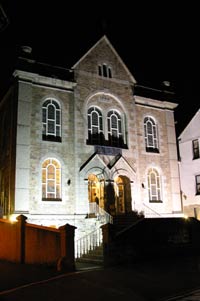 than
his alter-ego impersonator, Jon Culshaw, and spent the first few minutes
describing his quadruple by-pass heart operation. Apparently the
anaesthetic levels were such that he could actually recall the sensation
of a freezing-cold hand grasping into the centre of his chest. He then
described the effect on the resulting stitches of an unprovoked attack
which took place on the London Underground - a punch directly into this
area that was still highly vulnerable - with such a devastating effect
that he had to return to hospital for further attention. He went on to
describe to the hushed audience how, more recently, he was punched in the
eye and how the bruise curiously moved down his neck and ended up in a
subdued form over his left nipple.
than
his alter-ego impersonator, Jon Culshaw, and spent the first few minutes
describing his quadruple by-pass heart operation. Apparently the
anaesthetic levels were such that he could actually recall the sensation
of a freezing-cold hand grasping into the centre of his chest. He then
described the effect on the resulting stitches of an unprovoked attack
which took place on the London Underground - a punch directly into this
area that was still highly vulnerable - with such a devastating effect
that he had to return to hospital for further attention. He went on to
describe to the hushed audience how, more recently, he was punched in the
eye and how the bruise curiously moved down his neck and ended up in a
subdued form over his left nipple. 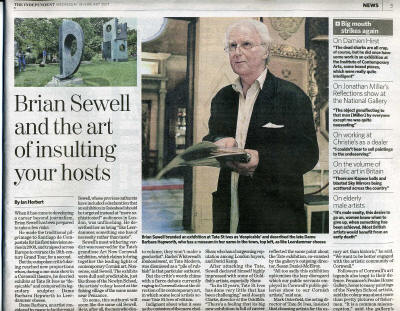
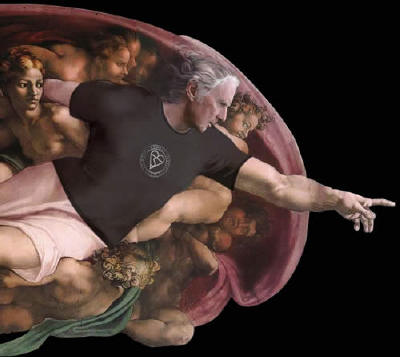
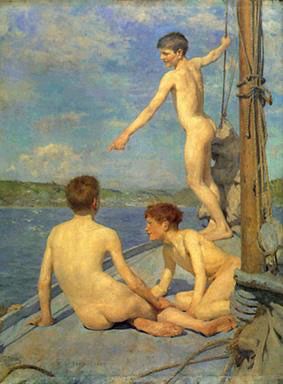
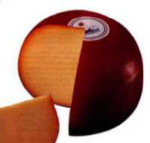 Can
we take all of this very seriously? No I don’t really think we are
supposed to - despite the fact that there may have been a certain Celtic
tendency to take offence easily, amongst some factions of the audience.
The Newlyn School was referred to as being devoted to “men in beards and
sou'westers”. He was kinder about Henry Scott Tuke (picture above right),
whose work he appears to have collected himself. He had been a little
critical –“really an historian” - about the Director of the National
Gallery, Charles Saumerez-Smith, such an obviously nice man. Essentially
this was an entertaining evening and Brian Sewell had distinguished
himself as a performance artist. He had not failed to entertain, not a bad
achievement for a shy man who, like his little dogs, had a bark that is
worse than his bite!
Can
we take all of this very seriously? No I don’t really think we are
supposed to - despite the fact that there may have been a certain Celtic
tendency to take offence easily, amongst some factions of the audience.
The Newlyn School was referred to as being devoted to “men in beards and
sou'westers”. He was kinder about Henry Scott Tuke (picture above right),
whose work he appears to have collected himself. He had been a little
critical –“really an historian” - about the Director of the National
Gallery, Charles Saumerez-Smith, such an obviously nice man. Essentially
this was an entertaining evening and Brian Sewell had distinguished
himself as a performance artist. He had not failed to entertain, not a bad
achievement for a shy man who, like his little dogs, had a bark that is
worse than his bite!